|
[1]
|
Asumadu-Sarkodie S, Sevinc C, Jayaweera HMPC (2016) A hybrid solar photovoltaic-Wind Turbine-Rankine cycle for electricity generation in Turkish Republic Of Northern Cyprus. Cogent Eng 3: 1180740.
|
|
[2]
|
Asumadu-Sarkodie S, Owusu PA (2016) Carbon dioxide emissions, GDP, energy use and population growth: a multivariate and causality analysis for Ghana, 1971–2013. Environ Sci Pollut Res Int 23: 13508-13520. doi: 10.1007/s11356-016-6511-x

|
|
[3]
|
Asumadu-Sarkodie S, Owusu PA (2016) Recent evidence of the relationship between carbon dioxide emissions, energy use, GDP and population in Ghana: A Linear Regression Approach. Energy Sources, Part B: Economics, Planning, and Policy.
|
|
[4]
|
Asumadu-Sarkodie S, Owusu PA (2016) Multivariate co-integration analysis of the Kaya factors in Ghana. Environ Sci Pollut Res Int 23: 9934-9943. doi: 10.1007/s11356-016-6245-9

|
|
[5]
|
Owusu P, Asumadu-Sarkodie S (2016) A review of renewable energy sources, sustainability issues and climate change mitigation. Cogent Engineering 3: 1167990. doi: 10.1080/23311916.2016.1167990

|
|
[6]
|
Asumadu-Sarkodie S, Owusu P (2016) A review of Ghana’s energy sector national energy statistics and policy framework. Cogent Eng 3: 1155274. doi: 10.1080/23311916.2016.1155274

|
|
[7]
|
Owusu PA, Asumadu-Sarkodie S, Ameyo P (2016) A review of Ghana’s water resource management and the future prospect. Cogent Eng 3: 1164275. doi: 10.1080/23311916.2016.1164275

|
|
[8]
|
Lipton M, Ravallion M (1993) Poverty and policy: World Bank Publications.
|
|
[9]
|
Asumadu-Sarkodie S, Owusu P (2016) The casual nexus between child mortality rate, fertility rate, GDP, household final consumption expenditure, and food production index. Cogent Econ Fin 4: 1191985.
|
|
[10]
|
UNDP (2016) Human Development Indicators.
|
|
[11]
|
Tang X, Liao H (2014) Energy poverty and solid fuels use in rural China: Analysis based on national population census. Energy Sustain Dev 23: 122-129. doi: 10.1016/j.esd.2014.08.006

|
|
[12]
|
Asumadu-Sarkodie S, Owusu P (2016) Feasibility of biomass heating system in Middle East Technical University, Northern Cyprus Campus. Cogent Eng 3: 1134304.
|
|
[13]
|
Johansson TB, McCormick K, Neij L, et al. (2004) The potentials of renewable energy: March.
|
|
[14]
|
Asif M, Muneer T (2007) Energy supply, its demand and security issues for developed and emerging economies. Renew Sustain Energy Rev 11: 1388-1413. doi: 10.1016/j.rser.2005.12.004

|
|
[15]
|
Turkenburg WC, Beurskens J, Faaij A, et al. (2000) Renewable energy technologies. World energy assessment: Energy challenge sustain: 219-272.
|
|
[16]
|
Energy Commission (2011) Ghana renewable energy bill.
|
|
[17]
|
PURC Ghana (2012) Ghana Energy Policy.
|
|
[18]
|
Deichmann U, Meisner C, Murray S, et al. (2011) The economics of renewable energy expansion in rural Sub-Saharan Africa. Energy Policy 39: 215-227. doi: 10.1016/j.enpol.2010.09.034

|
|
[19]
|
Globserver (2015) Ghana Energy Profile.
|
|
[20]
|
Reegle (2014) Energy Profile, Ghana.
|
|
[21]
|
Asumadu-Sarkodie S, Owusu PA (2016) The potential and economic viability of wind farms in Ghana. Energ Source Part A 38: 695-701. doi: 10.1080/15567036.2015.1122680

|
|
[22]
|
Asumadu-Sarkodie S, Owusu PA (2016) The potential and economic viability of solar photovoltaic power in Ghana. Energy Source Part A 38: 709-716. doi: 10.1080/15567036.2015.1122682

|
|
[23]
|
Gboney W (2009) Policy and regulatory framework for renewable energy and energy efficiency development in Ghana. Climate Policy 9: 508-516. doi: 10.3763/cpol.2009.0636

|
|
[24]
|
Gaye A (2007) Access to energy and human development. Human development report 2008.
|
|
[25]
|
Asumadu-Sarkodie S, Owusu PA (2016) Forecasting Nigeria’s energy-use by 2030, an econometric approach. Energy Source Part B: Economics, Planning, and Policy.
|
|
[26]
|
Asumadu-Sarkodie S, Owusu PA (2016) Energy use, carbon dioxide emissions, GDP, industrialization, financial development and population, a causal nexus in Sri Lanka: with a subsequent Prediction of Energy Use Using Neural Network. Energy Source Part B: Economics, Planning, and Policy.
|
|
[27]
|
Asumadu-Sarkodie S, Owusu PA (2016) Carbon dioxide emission, electricity consumption, industrialization and economic growth nexus: The Beninese Case. Energy Source Part B: Economics, Planning, and Policy.
|
|
[28]
|
Mohiuddin O, Asumadu-Sarkodie S, Obaidullah M (2016) The relationship between carbon dioxide emissions, energy consumption, and GDP: a recent evidence from Pakistan. Cogent Eng 3: 1210491. doi: 10.1080/23311916.2016.1210491

|
|
[29]
|
Asumadu-Sarkodie S, Owusu PA (2016) The causal nexus between energy use, carbon dioxide emissions and macroeconomic variables in Ghana. Energy Source Part B: Economics, Planning, and Policy.
|
|
[30]
|
Asumadu-Sarkodie S, Owusu PA (2016) The causal effect of carbon dioxide emissions, electricity consumption, economic growth and industrialization in Sierra Leone. Energy Source Part B: Economics, Planning, and Policy.
|
|
[31]
|
Asumadu-Sarkodie S, Owusu PA (2016) A multivariate analysis of carbon dioxide emissions, electricity consumption, economic growth, financial development, industrialization and urbanization in Senegal. Energy Source Part B: Economics, Planning, and Policy.
|
|
[32]
|
Energy Commission G (2012) The SWERA Ghana Project.
|
|
[33]
|
Energy Commission (2011) Annual report for 2011.
|
|
[34]
|
Kemausuor F, Obeng GY, Brew-Hammond A, et al. (2011) A review of trends, policies and plans for increasing energy access in Ghana. Renew Sustain Energy Rev 15: 5143-5154. doi: 10.1016/j.rser.2011.07.041

|
|
[35]
|
Dora C, Haines A, Balbus J, et al. (2015) Indicators linking health and sustainability in the post-2015 development agenda. The Lancet 385: 380-391. doi: 10.1016/S0140-6736(14)60605-X

|
|
[36]
|
Commission CE (2001) A Guide to Photovoltaic (PV) System design and installation: consultant report: California Energy Commission.
|
|
[37]
|
Gyamfi S, Modjinou M, Djordjevic S (2015) Improving electricity supply security in Ghana-The potential of renewable energy. Renew Sustain Energy Rev 43: 1035-1045. doi: 10.1016/j.rser.2014.11.102

|
|
[38]
|
PV Magazine (2015) Solar to play key role in Ghana’s US $230 million renewable energy program.
|
|
[39]
|
Azuri (2015) 100,000 of Ghana’s off-grid households to benefit from pay-as-you-go solar power.
|
|
[40]
|
Obeng GY, Evers HD (2009) Solar PV rural electrification and energy-poverty: a review and conceptual framework with reference to Ghana.
|
|
[41]
|
Samuel AS, Phebe Asantewaa O (2016) Solar PV installations in Ghana.
|
|
[42]
|
Energy Commission (2009) Renewable energy policy framework for climate change mitigation in Ghana.
|
|
[43]
|
Solar SG (2015) Global horizontal irradiation (GHI), Ghana.
|
|
[44]
|
Duffie JA, Beckman WA (1980) Solar engineering of thermal processes: Wiley New York etc.
|
|
[45]
|
Baker DK, ?zalevli CC, S?mek SK (2015) Technical study of a hybrid solar–geothermal power plant and its application to a thermal design course. Prog Clean Energy 2: 887-910.
|
|
[46]
|
World Portlio (2012) Ghana.
|
|
[47]
|
RECIPES (2006) RET.
|












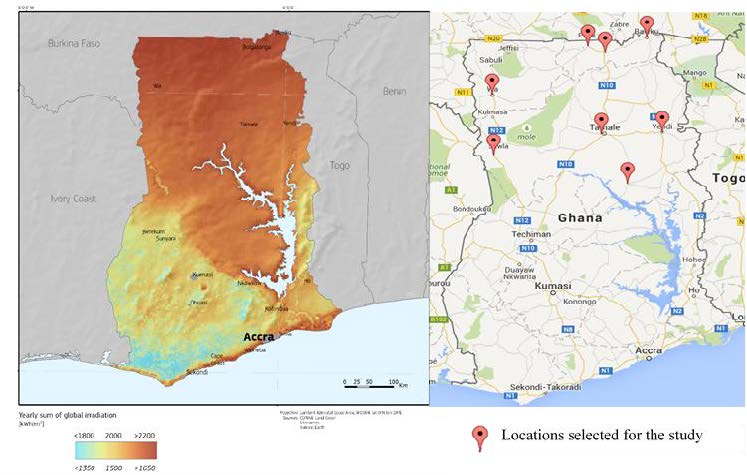
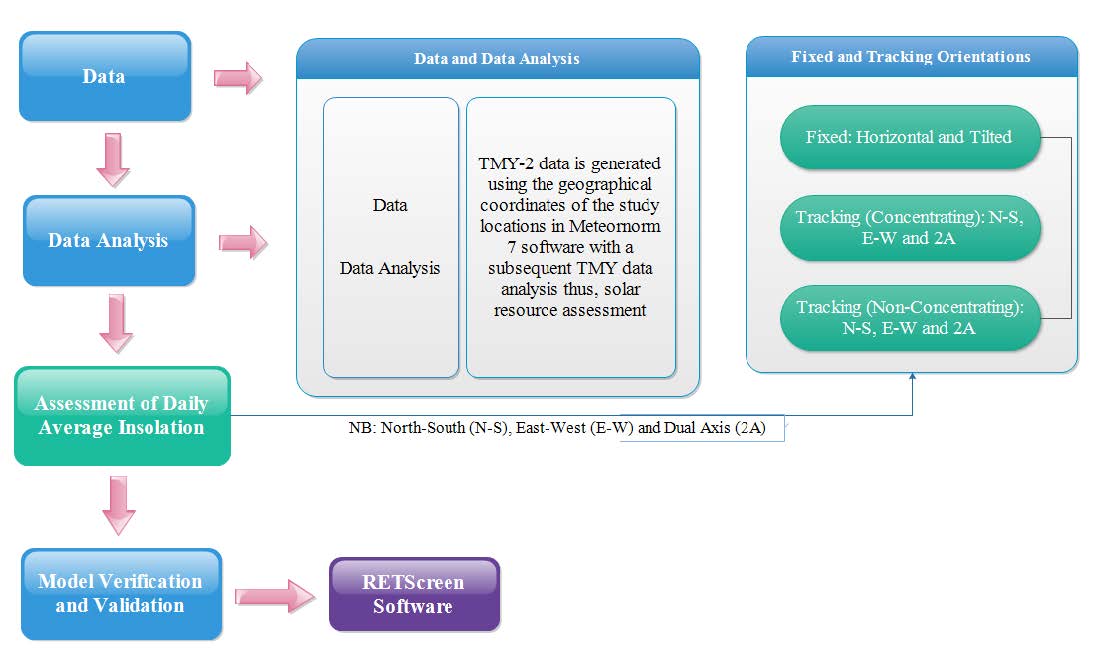

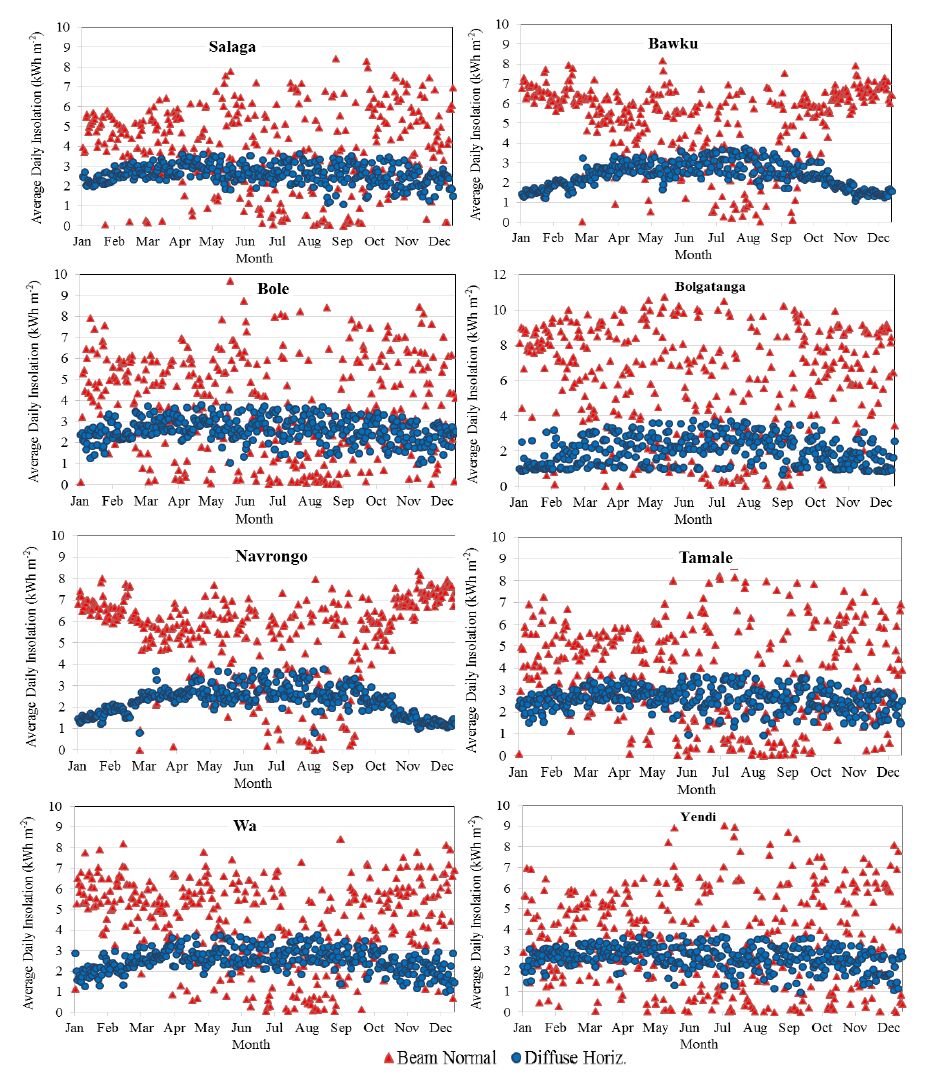
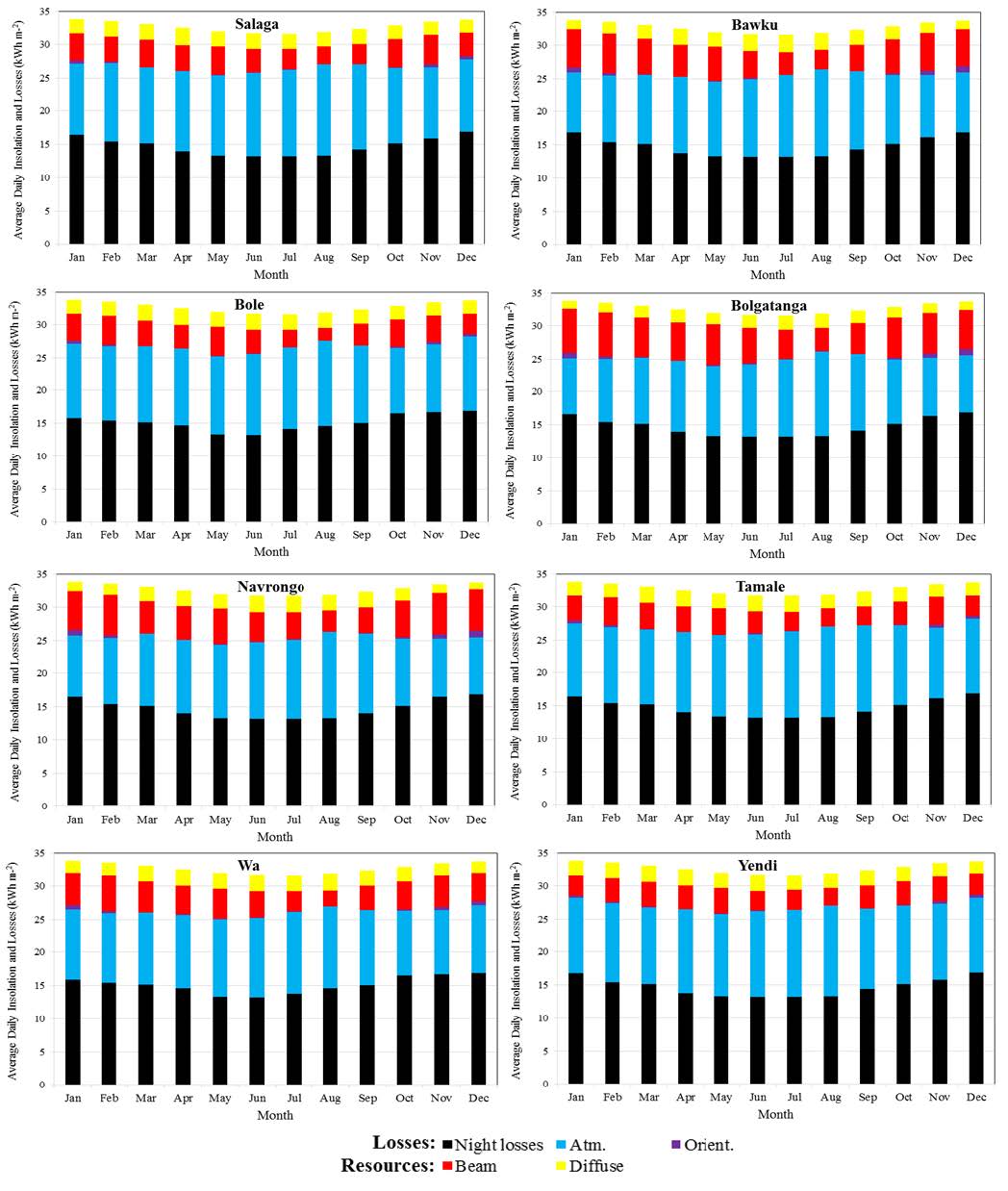
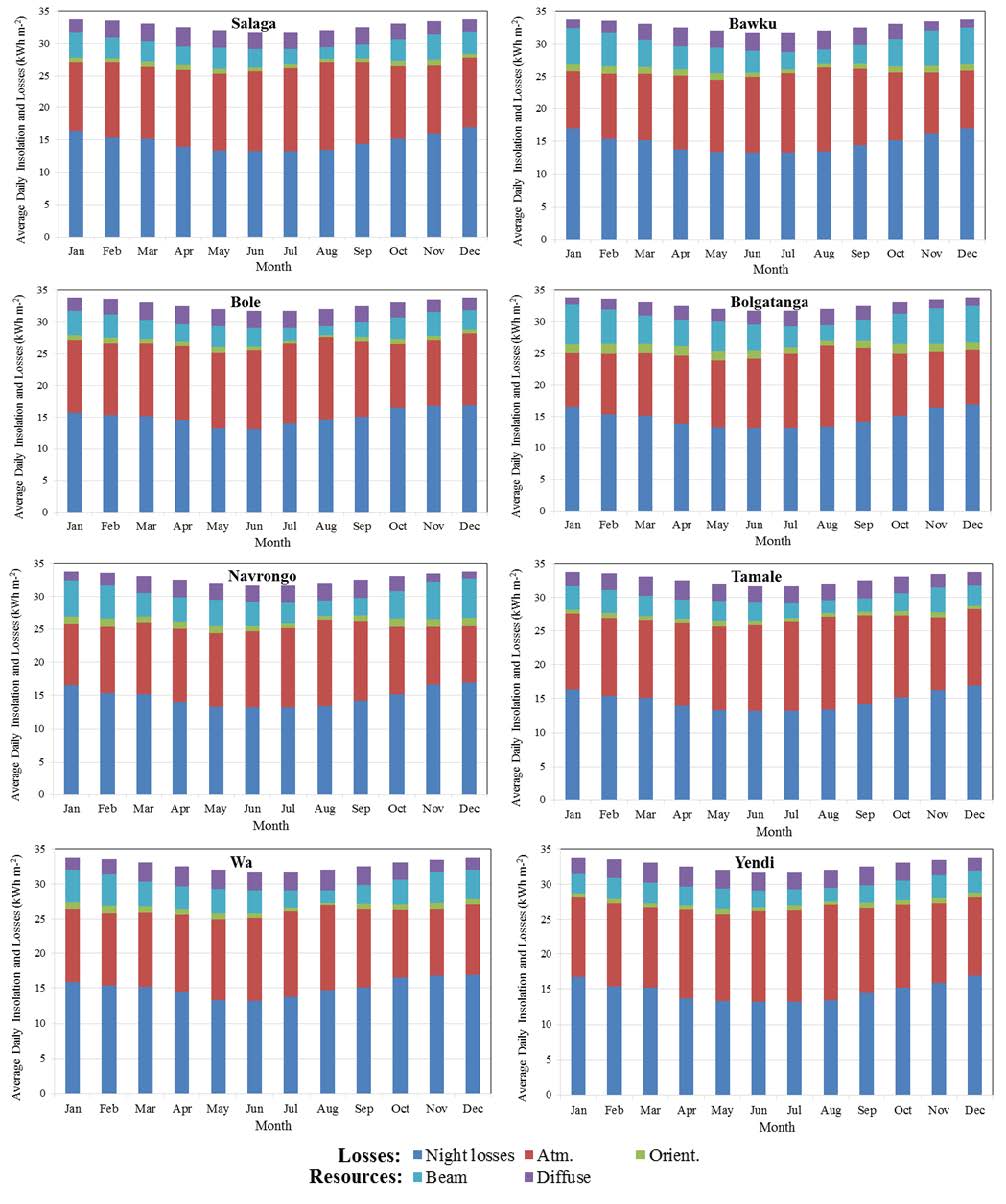
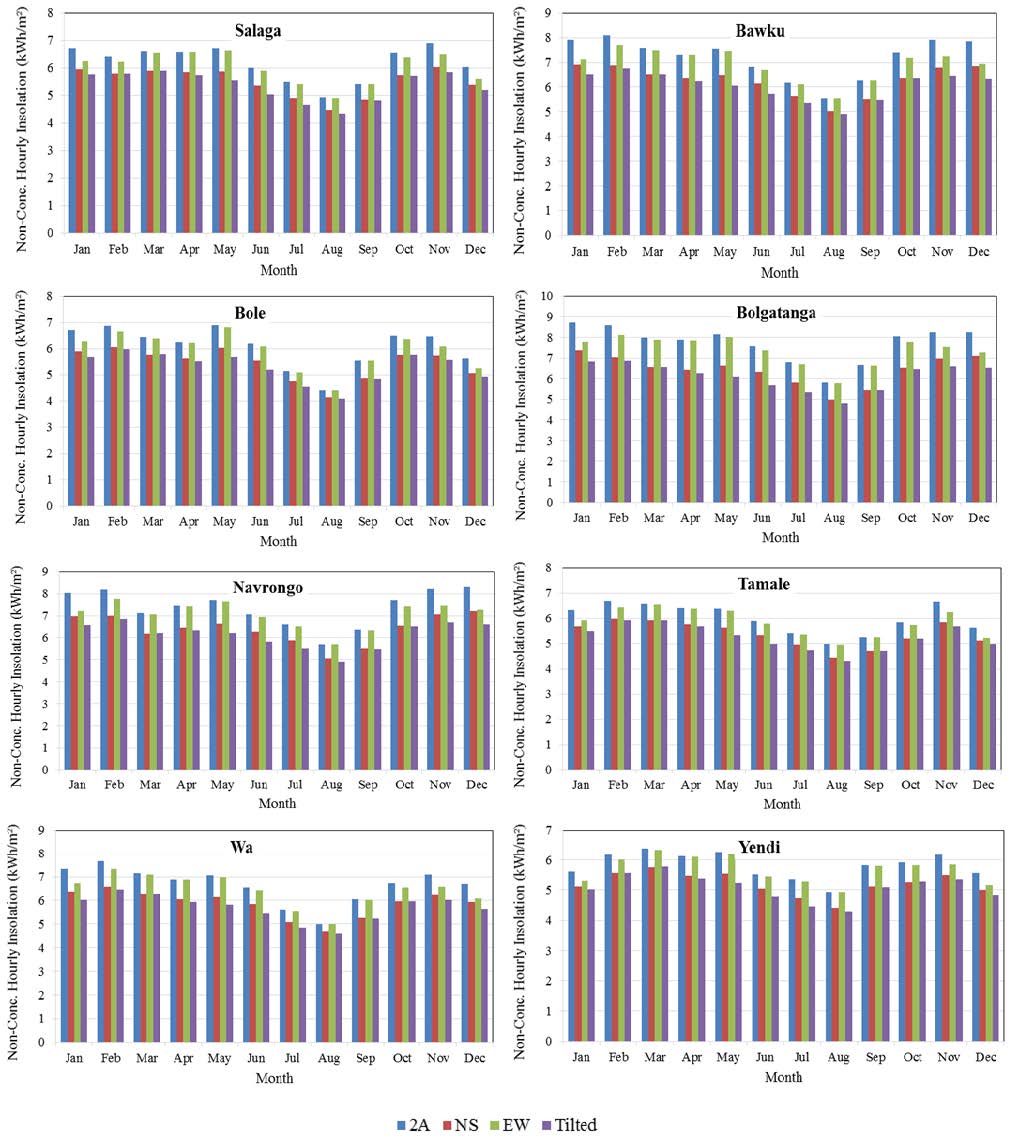
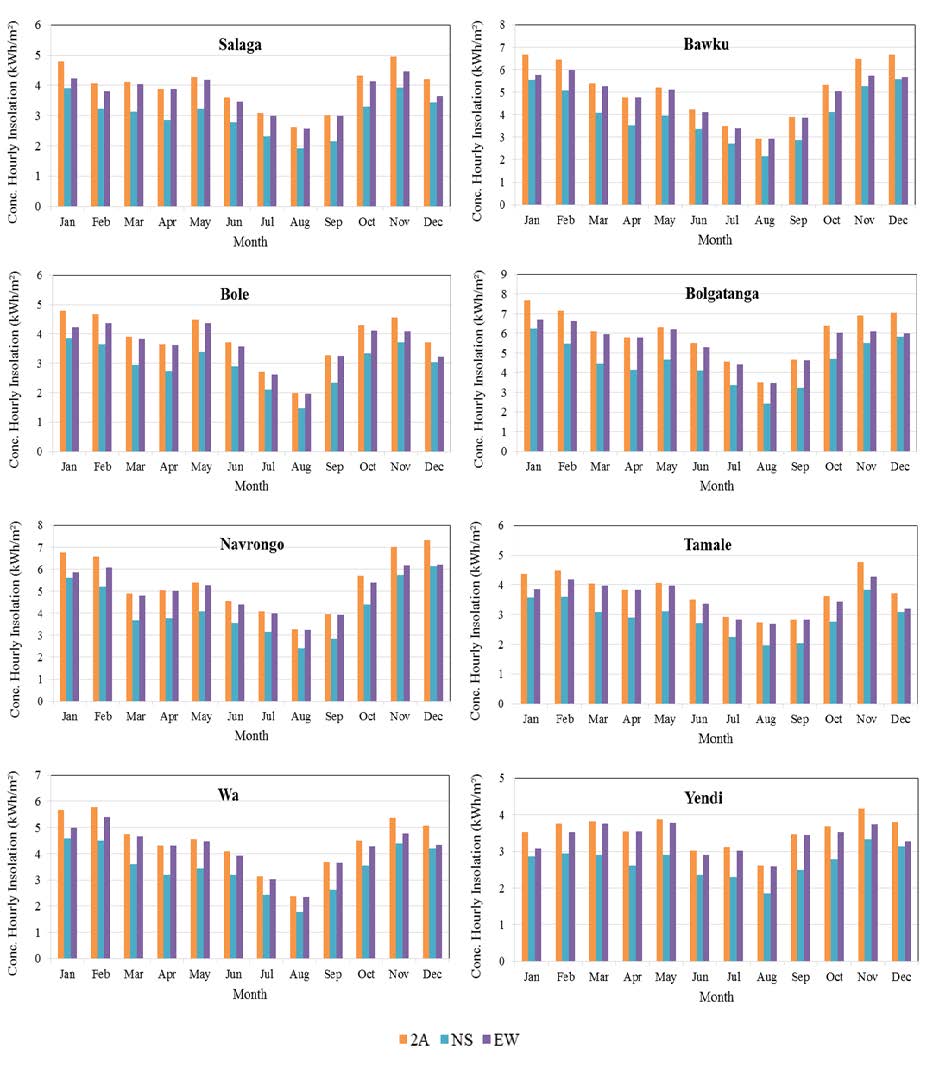
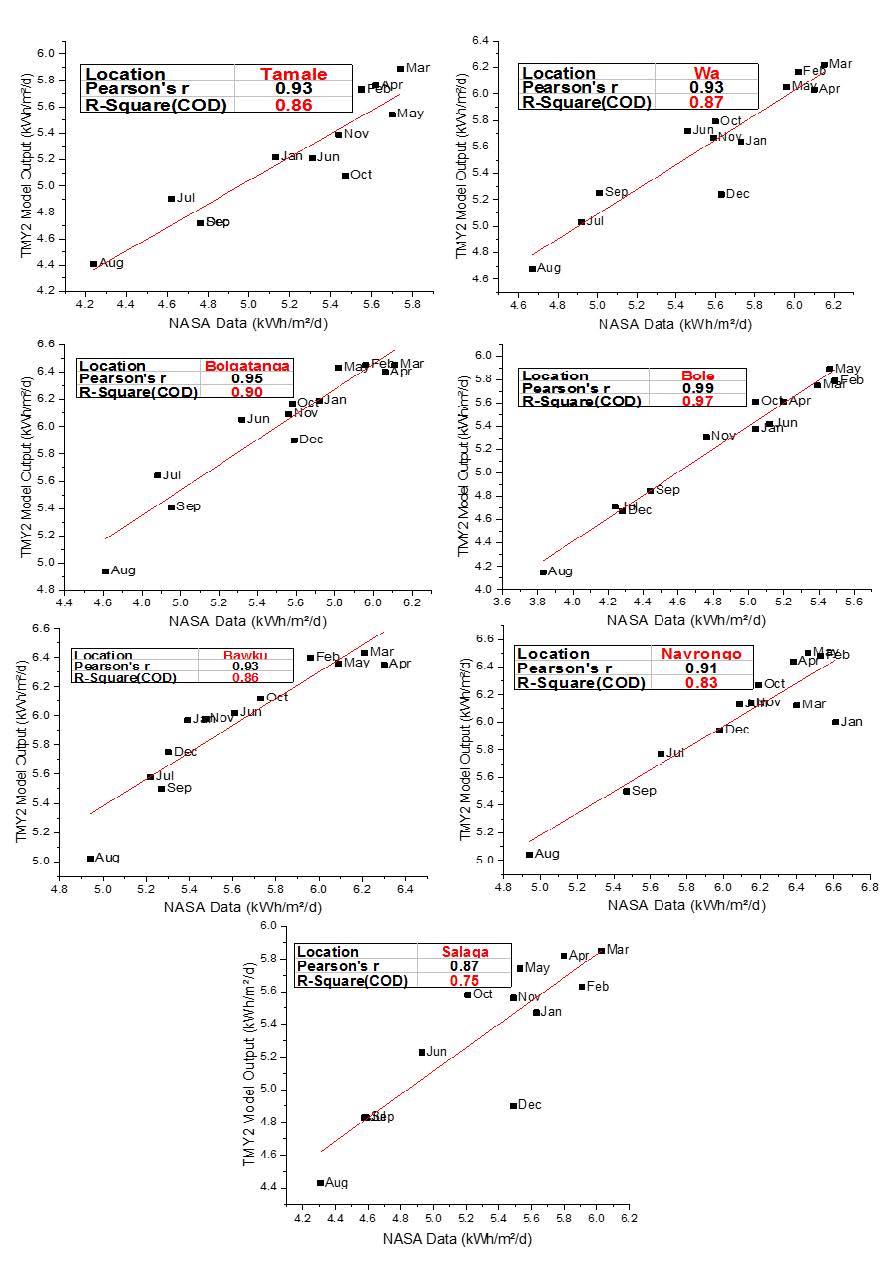
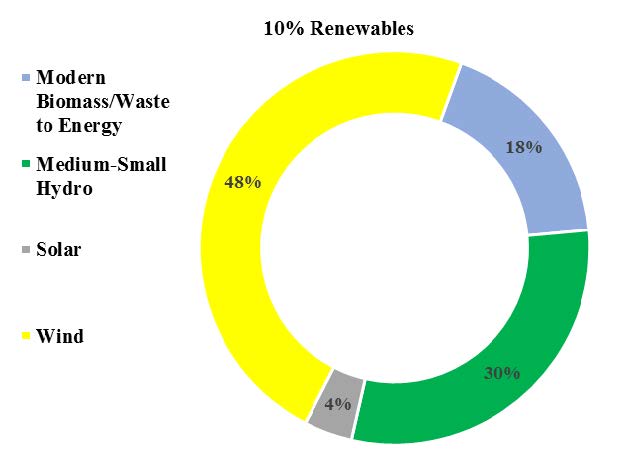


 DownLoad:
DownLoad: